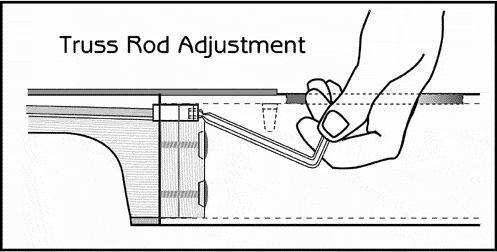The trussrod is the part of the guitar that stabilizes the relief of the neck. Usually it is a steel bar or rod that runs inside the neck, beneath the fingerboard. Some are non-adjustable, but most modern trussrods have a nut at one or both ends that adjust its tension.

A guitar neck made of wood is prone to bending due to mainly 2 factors, atmospheric changes and the pull created by changing to a different gauge of guitar strings. A truss rod keeps the neck straight by countering the pull of the strings and natural tendencies in the wood.
When the truss rod is loosened, the neck bends slightly in response to the tension of the strings. Similarly, when tightened the truss rod straightens the neck by resisting string tension.
Relief achieved through the truss rod combines with the height of the bridge to affect the playability of the instrument. The two should be adjusted in tandem. Too much relief can make a neck feel floppy, slow and lifeless—while too little can make the strings buzz on the frets.
Trussrods are required for instruments with steel (high tension) strings. Without a trussrod, the guitar’s wooden neck would gradually warp (i.e. bend) beyond repair due to applied high tension. Such devices are not normally needed on instruments with lower tension strings, such as the classical guitar, which uses nylon strings.


